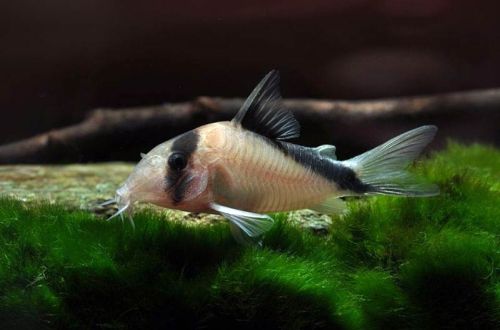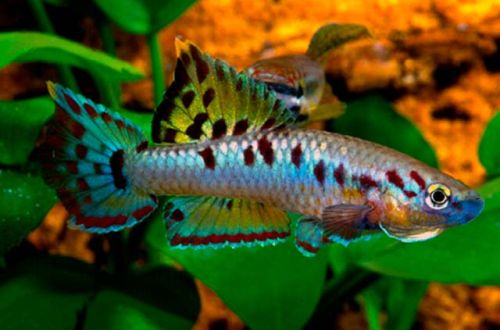
Sands Corridor
Corydoras Sands or catfish Cory Sands, scientific name Corydoras davidsandsi, belongs to the family Callichthyidae (Shell or Callicht catfish). Named after the English aquarist, author of a number of books on keeping freshwater fish, David Sands.

Comes from South America. It is considered endemic to the Unini River Basin, a right tributary of the Rio Negro, located in the Brazilian state of Amazonas in the heart of tropical rainforests. A typical biotope is a stream or river with very dark water. The brown color of the water is given by high concentrations of tannins, which are formed as a result of the decomposition of numerous plant organic matter (leaves, branches, tree trunks), which littered the riverbed.
Contents
Description
It is a close relative of Corydoras Adolphus and Corydoras Burgess, which is manifested in the similarity of their coloration and body pattern. Adults reach a length of 5–6 cm. The color is pale gray with pink hues. The drawing consists of two black stripes. The first runs along the back from the dorsal fin to the tail, the second is on the head in the form of a diagonal stroke.
Brief information:
- The volume of the aquarium – from 80 liters.
- Temperature – 20-28°C
- Value pH — 5.0–7.0
- Water hardness – soft (1-8 dGH)
- Substrate type – sand or gravel
- Lighting – moderate or bright
- Brackish water – no
- Water movement – light or moderate
- The size of the fish is 5–6 cm.
- Food – any sinking food
- Temperament – peaceful
- Keeping in a group of 4-6 fish
Maintenance and care
Over many generations of life in the artificial environment of aquariums, Sands Corydoras have adapted to a somewhat different environment than that in which their wild relatives are found. Therefore, the content requirements are quite simple. It is necessary to maintain the hydrochemical composition of the water within acceptable pH and dGH values, provide a balanced diet and not settle together with aggressive fish.
The optimal tank sizes for a group of 4-6 individuals start at 80 liters. The design is simple, selected at the discretion of the aquarist or based on the needs of other fish. For catfish, it is quite enough to place a sandy or finely gravel substrate and provide several places for shelters, which can be snags, thickets of plants, or other natural or artificial decor.
A productive filter and regular cleaning of the aquarium, along with a weekly replacement of part of the water with fresh water, will prevent excessive accumulation of organic waste and maintain a stable biological balance.
Food. They will accept most of the popular foods in dry, frozen and live form. A varied diet is welcome, for example, from a combination of flakes, bloodworm pellets, brine shrimp or daphnia. The food must be sinking. It is unacceptable to overfeed the fish, food residues can lead to rapid water pollution.
behavior and compatibility. Kori catfish prefer to be in a group of 4-6 individuals. Peaceful, get along well with other species of similar size and temperament.





